North Las Vegas, NV Pollen and Allergy Report for Summer 2023
Pollen Allergy Trends in North Las Vegas, NV
When is pollen lowest in North Las Vegas, NV?

February
Lowest month total PPM
Avg. PPM
When is pollen highest in North Las Vegas, NV?

March
Highest month total PPM
Avg. PPM
How does pollen in North Las Vegas, NV compare to Nevada?
North Las Vegas has a lower average PPM than the state of Nevada.
North Las Vegas yearly avg PPM:
Nevada yearly avg PPM:
How does pollen in North Las Vegas, NV compare to the USA?
North Las Vegas has a lower average PPM than the USA.
North Las Vegas yearly avg PPM:
USA yearly avg PPM:
Is pollen worse this year in North Las Vegas, NV?
Spring 2023 was better than spring 2022.
Spring 2023 PPM:
Spring 2022 PPM:
Average PPM in North Las Vegas, NV
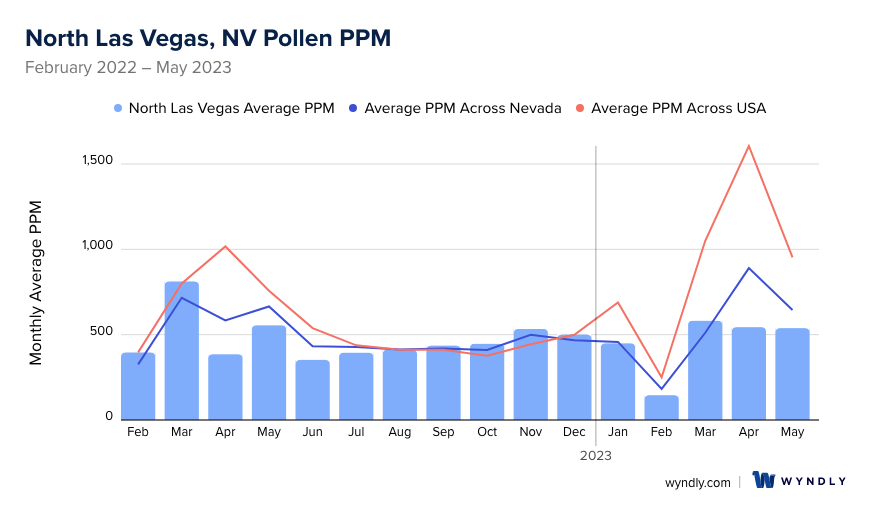
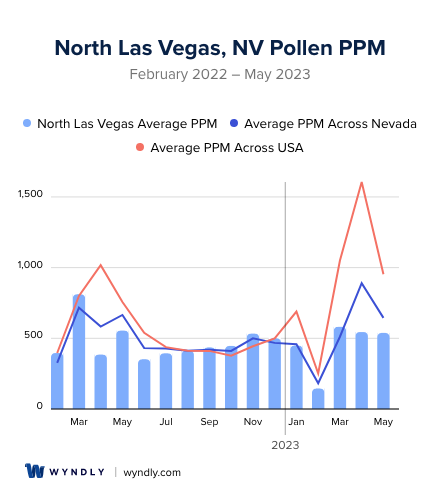
North Las Vegas, NV Pollen and Allergy Breakdown by Month
Grass
When is grass pollen highest in North Las Vegas, NV?
May has the highest grass pollen in North Las Vegas, NV with an average PPM of
When is grass pollen lowest in North Las Vegas, NV?
December has the lowest grass pollen in North Las Vegas, NV with an average PPM of
Tree
When is tree pollen highest in North Las Vegas, NV?
March has the highest tree pollen in North Las Vegas, NV with an average PPM of
When is tree pollen lowest in North Las Vegas, NV?
July has the lowest tree pollen in North Las Vegas, NV with an average PPM of
Weed
When is weed pollen highest in North Las Vegas, NV?
November has the highest weed pollen in North Las Vegas, NV with an average PPM of
When is weed pollen lowest in North Las Vegas, NV?
February has the lowest weed pollen in North Las Vegas, NV with an average PPM of
North Las Vegas, NV Pollen Monthly Breakdown by Pollen Type
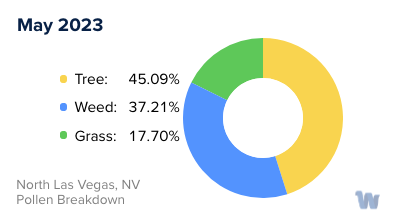
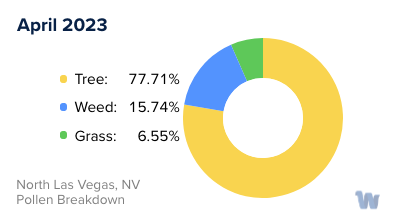
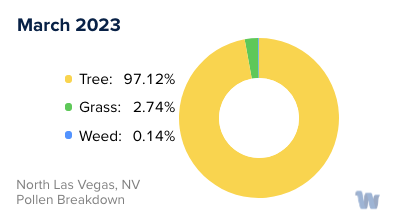
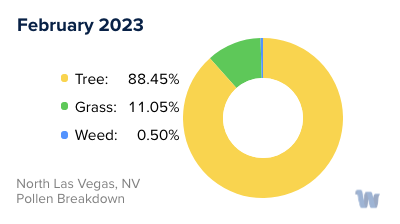
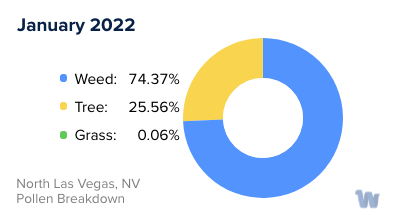
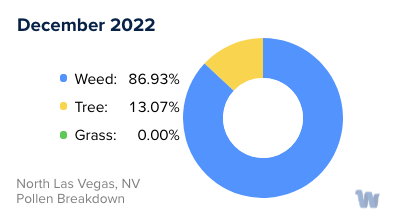
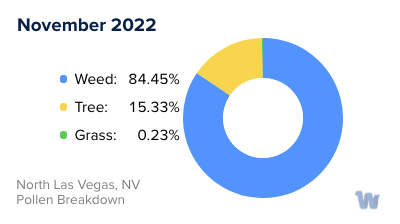
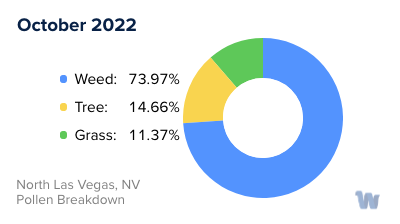
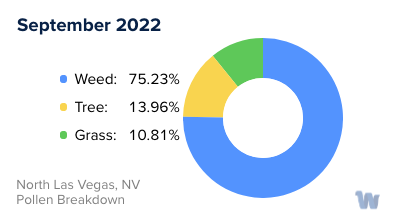
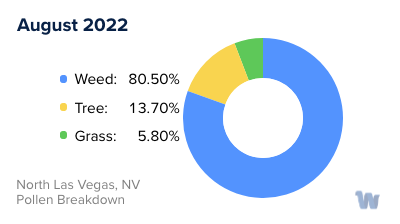
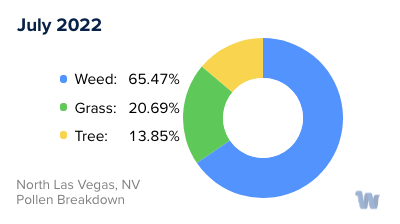
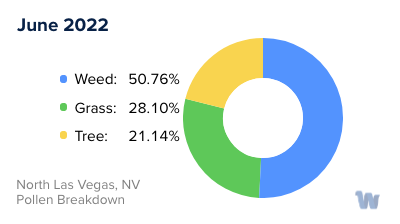
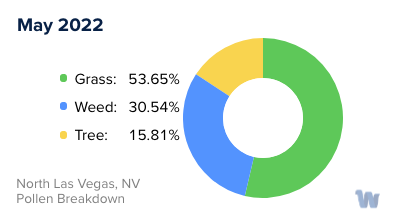
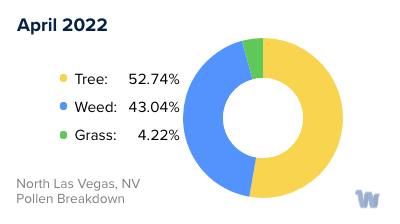
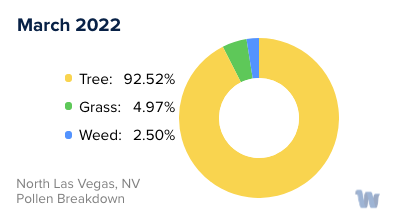
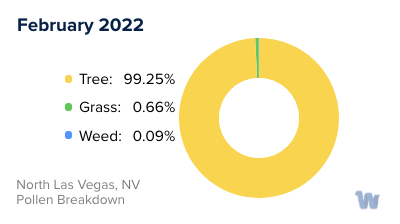
Pollen and Hay Fever in North Las Vegas, NV
For residents of North Las Vegas, Nevada, the arrival of spring often means more than just blooming flowers and warmer weather—it also signifies the start of pollen season, which can cause discomfort for those with pollen allergies. The most noticeable characteristics of pollen allergies are their seasonal nature, with many people only experiencing symptoms when certain types of pollen are in the air.
In North Las Vegas, pollen season typically starts in the early spring and may last until May, with different types of pollen peaking at various times. The principal culprits of spring allergies in this area are pollen from juniper, mulberry, and various types of weeds. However, it's not just these plants that can cause allergies. Many other types of plants, including trees, weeds, and grasses that do not bear flowers or fruit, can produce small, light, pollen grains in large quantities that can be carried through the air for long distances, causing allergic reactions in some individuals.
Interestingly, most of the allergen-producing plants in Las Vegas aren't native trees and bushes watered by rain, but exotics planted by people and watered via sprinklers. Some of the common allergens include sagebrush, ragweed, redroot pigweed, goosefoot lamb’s quarters, English plantain, and tumbleweed. Certain grasses like Kentucky bluegrass, timothy grass, Johnson grass, redtop grass, Bermuda grass, and orchard grass can also cause allergic reactions, as can hardwood short-term trees such as ash, oak, elm, maple, birch, hazel, and alder. Even conifers like juniper, cypress, Sequoia, and cedar trees can cause symptoms in some individuals.
The White Mulberry tree, which produces a significant amount of pollen and fruit, was once a common sight in North Las Vegas. However, due to the severe allergies it can cause, it's now illegal to plant it in the city. Despite this, pollen levels keep on increasing as surviving trees grow bigger.
It's worth noting that not all plants contribute equally to the problem. Trees and shrubs with large, showy flowers like oleander typically do not cause much trouble. This is because their pollen is heavy or sticky, doesn't travel far in the air, and the plants release pollen that is too large to cause allergy problems. Most of the problem pollen comes from nonshowy flowers commonly found on olive, mulberry, pines, ash trees, and mesquite.
Understanding the types of pollen and their seasons in North Las Vegas can help individuals be better prepared for the changes in the environment and the challenges that pollen allergies can bring.


